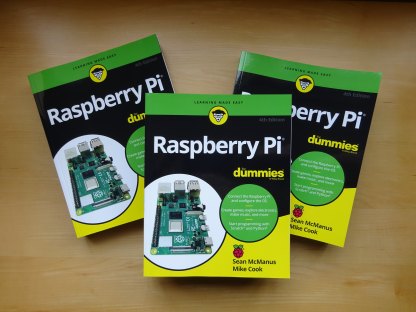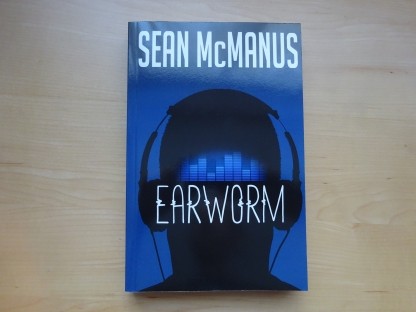
100 Top Tips: Microsoft Excel
Power up your Microsoft Excel skills with this powerful pocket-sized book of tips that will save you time and help you learn more from your spreadsheets.
23 March 2020
I've been thinking about how I can help as the country undertakes a collective effort to stay at home to stop the spread of the novel coronavirus. I have some spare copies of my books, and I'm willing to post them to people who might find them useful for home schooling or for developing their own skills while at home. The books are free, one per UK household, to those who can make use of them.
I have copies of the following titles available:
If you'd like one of these books, please contact me here. Tell me which book you'd like, and send me your postal address. This is only open to UK addresses, one book per household. Offer available as long as practical, which includes while stocks last, and also while I am able to get to a post office that will accept the parcels [Update: to clarify, I'm printing the postage at home and putting them in the postbox, so there's no risk to anyone. I can do this as long as the Royal Mail sustains its service]. I'll be pleased to see these books put to good use.
I have a limited stock available, so I'll update above when they are gone. If you would like to read these books but I don't have any left, or if you'd like to support retailers and publishers and feel able to do so, these books and my other coding books are also available to buy online. If your normal retailer is not able to supply them, you can try ordering directly from the publisher. Find links to buy all my books in my shop here.
Stay safe. Stay at home! And I hope you have fun coding!
Permanent link for this post | Blog Home | Website Home | Email feedback
18 March 2020
When I wrote the updated version of Scratch Programming in Easy Steps, I was keen to cover devices such as the micro:bit and the Raspberry Pi Sense HAT, which are not covered in most other books. Using the new Extensions feature in Scratch 3, it's now possible to add blocks to the Blocks Palette to support these devices. In this blog, I'll tell you more about using the micro:bit.

The micro:bit is a small device (about 6cm measured diagonally) that provides an easy introduction to physical computing with Scratch. It includes a 5x5 grid of red LEDs, two buttons, and tilt sensors. There are also GPIO pins that enable you to connect up circuits easily using crocodile clips. At about £15, the micro:bit is a great investment.
You can use all of these micro:bit features from the latest version of Scratch, by connecting to the micro:bit over Bluetooth. To set up your micro:bit for Scratch, follow these steps:
The new blocks are shown below:

These blocks include hat blocks to start a new script when the A, B or either button is pressed; when the micro:bit is moved, shaken or jumped; or when the micro:bit is tilted in a particular direction or in any direction. There are also blocks you can use to find out whether the micro:bit is tilted in a particular direction, or what the tilt angle is in a particular direction.
For the updated edition of Scratch Programming in Easy Steps, I created a game called Balloon Floater as a documented example to show how the micro:bit works with Scratch. To play it, you tilt the micro:bit to change the velocity of a balloon as it floats through a cave. I included "zoom to end" and "brake" controls using the A and B buttons. The game looks like this:

I've also written a project for the latest issue of micro:mag magazine, which is available for free download or pre-order in print. You can download the Scratch file for this project here. (UPDATE: Download the article PDF here!). This is an audio game, which uses the new text-to-speech extension to tell you how to move the micro:bit and times how long you take to do so. As written, the game is fairly easy but it becomes a test of focus, the longer the game goes on. The arrows in the game are irrelevant and are there to try to confuse you! How long can you focus on responding quickly? The game can be adapted so it challenges you to repeat a pattern, or requires you to respond quickly to stay in the game. Here's a video demo:
Here are some observations I made from this project, and the Balloon Floater project:
The article in micro:mag shows you how to build the audio game, and I hope it will prove a fun basis for experimentation for teachers, students and hobbyists. I hope the article is clear, but if you're experiencing difficulties, here are some debugging tips that didn't fit in the magazine:
I'd like to give a shout out to the team that puts micro:mag together, including Joshua Lowe, Kerry Kidd and Luke Castle. It really is an awesome resource for the edtech community, and they are all volunteers, making it happen. You can support the mag by sharing it, buying it or the associated merchandise, or contributing. You can also donate to the magazine, or place an advert if you have a related product.
Find out more about micro:mag and download the latest issue here. There's more information about the new edition of Scratch Programming in Easy Steps on my blog here. You can find my hub for Scratch resources here.
Permanent link for this post | Blog Home | Website Home | Email feedback
© Sean McManus. All rights reserved.
Visit www.sean.co.uk for free chapters from Sean's coding books (including Mission Python, Scratch Programming in Easy Steps and Coder Academy) and more!

Power up your Microsoft Excel skills with this powerful pocket-sized book of tips that will save you time and help you learn more from your spreadsheets.

This book, now fully updated for Scratch 3, will take you from the basics of the Scratch language into the depths of its more advanced features. A great way to start programming.

Code a space adventure game in this Python programming book published by No Starch Press.

Discover how to make 3D games, create mazes, build a drum machine, make a game with cartoon animals and more!

Set up your Raspberry Pi, then learn how to use the Linux command line, Scratch, Python, Sonic Pi, Minecraft and electronics projects with it.

In this entertaining techno-thriller, Sean McManus takes a slice through the music industry: from the boardroom to the stage; from the studio to the record fair.